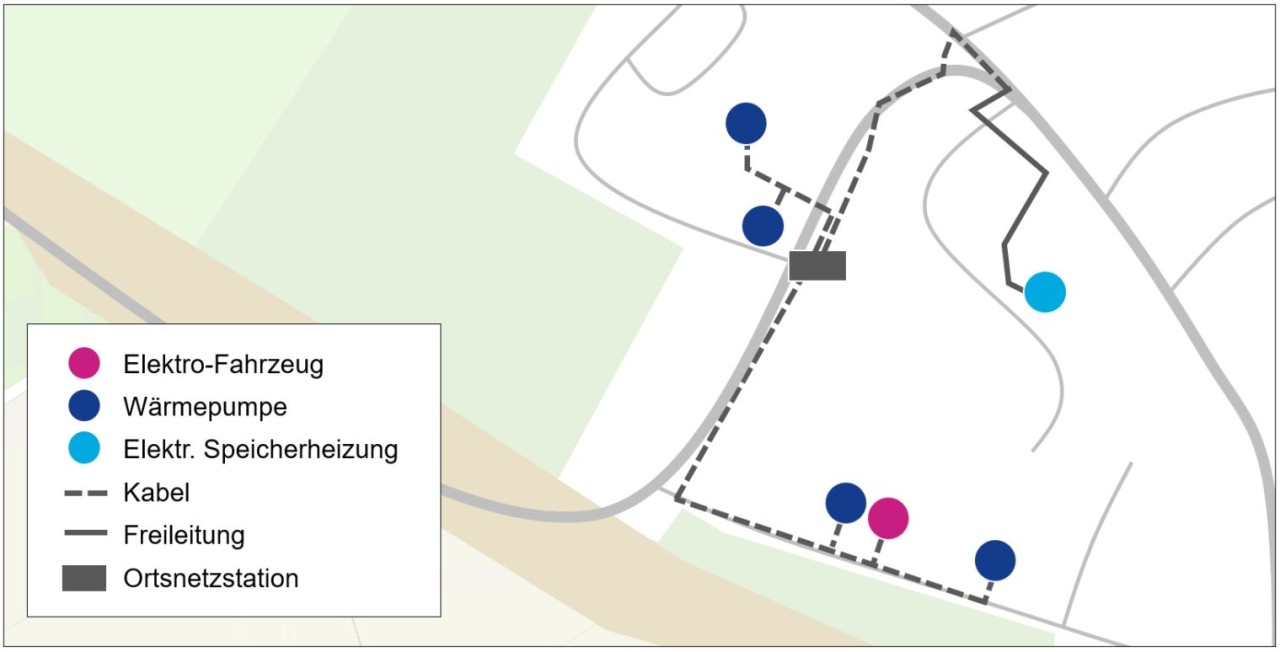
Practical implementation of a real laboratory for a decentralised load management concept
For distribution grid operators, load management is a possible alternative to grid expansion. to grid expansion that offers additional flexibility, enables the minimisation of load peaks and can thus increase the efficiency of the grid. Within the scope of this research work, a concept for decentralised load management will be developed, especially for e-mobility, heat pumps and electric storage heaters. Furthermore, it is intended to replace the hardware of audio frequency ripple control systems and time switches. The aim is to optimise the local grid status by minimising load peaks on site without the need for highly reliable communication technology is required. The concept allows flexible loads to be controlled without any communication with the grid by means of a fail-save option.
For the implementation of the real laboratory, an existing technical as well as regulatory framework has to be complied with. The implementation of the decentralised load management concept is already made possible on a legal basis by §14a EnWG in Germany. This allows distribution grid operators to control controllable consumption equipment in a way that serves the grid at reduced grid fees.
The contractual landscape of German distribution grid operators for the control of these consumers is very heterogeneous. In order to be able to implement the technical and contractual framework for the real laboratory, the types of controllable consumption devices are grouped into so-called flex clusters.
Read more details in the published article.